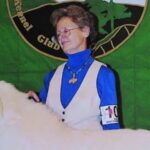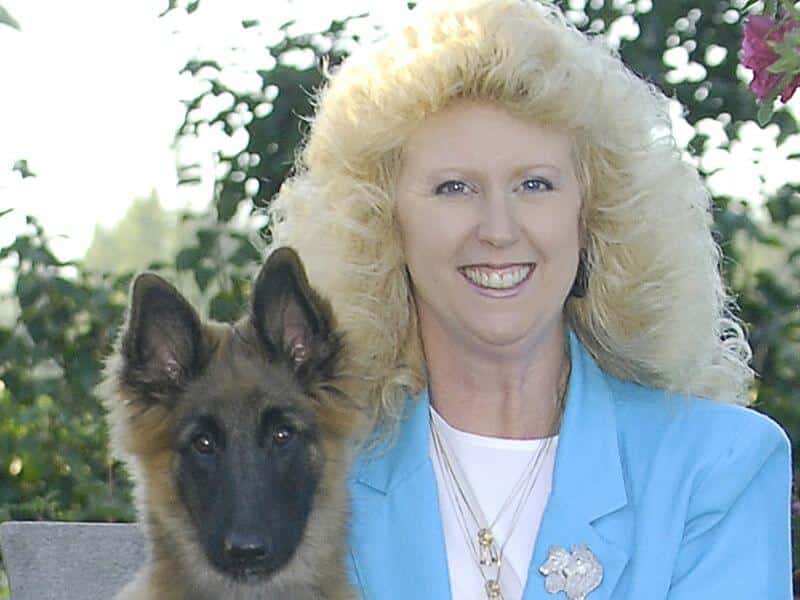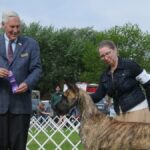Interview with Michelle Edling, Breeder of Sky Acres Belgian Tervuren
Please tell us a little bit about yourself. Where do you live? What is your breed? What is your kennel name? Do you have a website? How long have you been in dogs? How long have you been breeding dogs? Who are some of your best-known dogs?
Michelle Edling: I am a native Oregonian and live on a private airport located in The Dalles, 80 miles east of Portland in the Columbia River Gorge National Scenic Area. Since 1984, my breed has primarily been Belgian Tervuren, flying under the kennel name Sky Acres. Sky Acres Kennel’s website is www.SkyAcresTervuren.com. I have had dogs all my life and learned to walk holding onto a very patient German Shepherd Dog. I have been showing dogs at AKC events for over 50 years!
I have been breeding Belgian Tervuren since 1986. Some of my best-known dogs include MBIS/MBISS GCHG Sky Acres Flying Solo. “Solo” is the top-winning bitch in breed history. She was the No. 1 Belgian (All Belgians, All Systems) all three years of her campaign 2011-2013. No other Terv bitch has been ranked at No. 1. Another well-known Sky Acres’ dog is Solo’s son, MBIS/MBISS GCHP Sky Acres Maximum Altitude. “Tripp” was the No.1 Belgian (All Belgians, All Systems) 2014-2020! He embodied the Breed Standard and it was hard to hang up his leash! Tripp holds the breed record in Specialty wins with 26 BISS.
As a Breeder, can you share your thoughts on your breed today? Is breed type strong? Are there things to be concerned about? Are there any health-related issues? Have you worked with breeders overseas? Are pet homes typically available for your breed?
Michelle Edling: I am hopeful that we have more preservation breeders who are embracing the Breed Standard and setting long-term goals in their breeding programs. This is not a head breed… never has been and never should be. Tervuren are shepherds whose job it is to be a moving fence. They require sound conformation that allows them to work effortlessly and tirelessly, in all that they do. Sadly, there still seems to be many breeders who are breeding for a “look” and foregoing the more difficult challenge of breeding for sound structure. There are no quick fixes when breeding dogs; change takes time with careful consideration and planning. Breed type encompasses the entire dog, from nose to tail, from temperament to health. I feel we still need to be mindful of improving our dogs’ fronts, and close attention should be paid to the descriptors in the Standard.
Epilepsy has always been a breed concern and progress has been made in reducing the occurrence in many lines. Our primary concern at this time is stomach cancers. Our breed club has been one of the frontrunners in cancer research and continues to strive for DNA markers.
As an Exhibitor, can you comment on recent entries in your breed? Are majors available in your area? Does your breed often participate in Companion and Performance events? How can newcomers in your breed be encouraged to join the sport of dogs?
Michelle Edling: Sadly, the COVID aftermath and gas prices have affected our sport and our entries. Terv entries tend to be lower at most local shows. Due to this, the count requirements for majors are also down and it takes very few dogs for majors. This, in turn, does not make for a particularly competitive entry when vying for championship points.
Tervuren are well-known for their versatility and you will see them competing in all sports, from Sheep Herding to Lure Coursing and Dock Diving, as well as all the Agility, Tracking, and Obedience venues. Newcomers often come to this breed because of the Tervuren’s ability to do it all! The breed’s long-standing motto is: “A well-balanced Tervuren has a CH on one end and a UDT on the other!”
What are the biggest challenges facing the dog show community as a whole and how can we address them? And finally, what are some of the positive changes you’ve seen in your breed and in the dog show community as a whole over the past decade?
Michelle Edling: I think one of today’s biggest challenges is keeping costs down so that shows are affordable for everyone. Offering shows in clusters is one way to encourage attendance, as well as having two shows in one day at the smaller venues.
One of the most positive changes in my breed is the improvement in temperament. While this breed tends to be aloof with strangers, it must allow an exam without objection.
The National Owner-Handled Series competition has been a welcome addition to the dog show community, as well as all the new performance venues such as Fast CAT, Barn Hunt, Farm Dog, etc. There truly is something for everyone!








